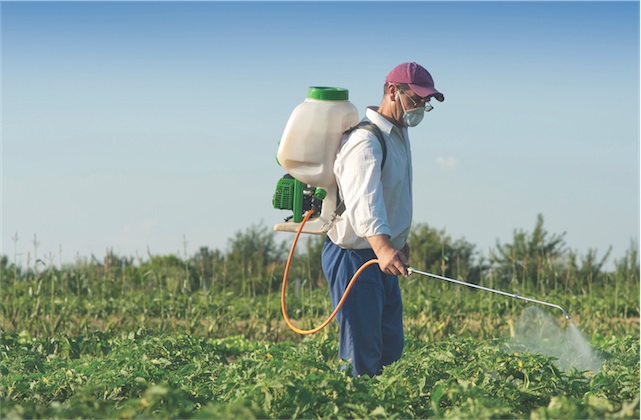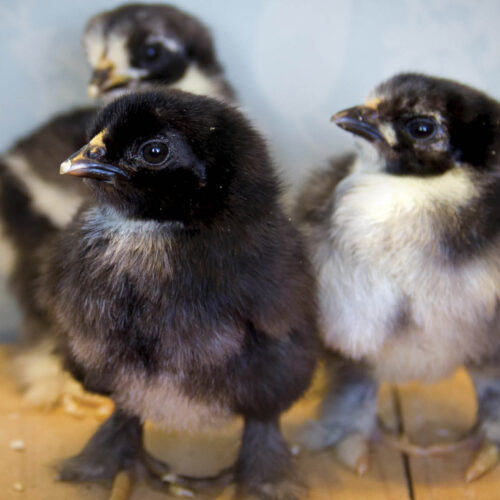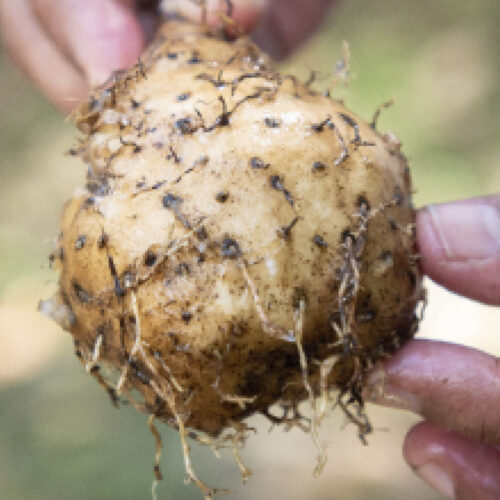Toxic debate
2014-12-09T23:45:19+11:00
The toxic debate over DDT and malaria prevention continues throughout the developing world, writes SIMON WEBSTER.
DDT and malaria
A story on Rachel Carson and her book Silent Spring appeared in the March/April 2015 issue of Organic Gardener. Here is the additional information on DDT referred to in that article.
Some of Rachel Carson’s present-day critics contend that her work led to a worldwide ban on DDT that has caused millions of lives to be lost to malaria. “Banning DDT killed more people than Hitler,” a character in a Michael Creighton novel says, expressing views that the author later said matched his own.
However, Carson was no ideologue, says biographer Linda Lear. She never called for a blanket ban, and recognised that pesticides have some uses, including the prevention of insect-borne diseases.
While agricultural use of DDT has been banned worldwide since 2004 under the Stockholm Convention on Persistent Organic Pollutants (POPs)*, the use of DDT to combat malaria is still legal. But it’s a contentious issue.
Advocates point to its success in virtually eradicating malaria in countries such as Sri Lanka in the early 1960s, and South Africa in recent years.
However, widespread mosquito resistance to DDT has reduced its effectiveness in many areas, and some countries, including Tanzania and Mexico, have had success against malaria by using alternative, non-chemical strategies such as distributing mosquito bed netting, clearing drains to reduce mosquito habitat, and spreading the bacterial insecticide Bacillus thuringiensis into sewers.
America continued to manufacture and export DDT until 1985, and China until 2007. India continues to manufacture DDT and is its largest consumer.
* The Stockholm Convention defines DDT and other POPs as organic chemical substances that, once released into the environment:
• remain intact for exceptionally long periods of time (many years);
• become widely distributed throughout the environment as a result of natural processes involving soil, water and, most notably, air;
• accumulate in the fatty tissue of living organisms including humans, and are found at higher concentrations at higher levels in the food chain; and
• are toxic to both humans and wildlife.
The Ten Toxic Truths
By Prof Marc Cohen
Here are the detailed references for this article that appeared in the March/April 2015 issue of Organic Gardener including ‘Ref 1’ and ‘Ref 2’ for Toxic Truths 7 & 8 respectively.
REFERENCES
Ref 1: Bouchard, M., Chevrier, J., Harley, KG., Kogut, K., Vedar, M., Calderon, N., Trujillo, C., Johnson, C., Bradman, A., Barr, DB., Eskenazi, B. (2011). “Prenatal exposure to organophosphate pesticides and IQ in 7-year-old children.” Environ Health Perspect 119(8).
Ref 2: Crews D, G. R., Scarpino SV, Manikkam M, Savenkova MI, Skinner MK. (2012). “Epigenetic transgenerational inheritance of altered stress responses.” Proc Natl Acad Sci 109(23): 9143-9148
Baillie-Hamilton (2002). “Chemical toxins: a hypothesis to explain the global obesity epidemic.” J Altern Complement Med. 2002 Apr;8(2):185-92.
Bouchard, M., Chevrier, J., Harley, KG., Kogut, K., Vedar, M., Calderon, N., Trujillo, C., Johnson, C., Bradman, A., Barr, DB., Eskenazi, B. (2011). “Prenatal exposure to organophosphate pesticides and IQ in 7-year-old children.” Environ Health Perspect 119(8).
Canada, E. D. (2013). Pre-polluted: A report on toxic substances in the umbilical cord blood of Canadian newborns. Toronto.
Carson, R. (1962). Silent Spring. New York, Houghton Mifflin.
Centers for Disease Control and Prevention (2009). Fourth National Report on Human Exposure to Environmental Chemicals, US Department of Health and Human Services Committee on Human Biomonitoring for Environmental Toxicants. (2006). Human Biomonitoring for Environmental Chemicals National Research Council
Crews D, G. R., Scarpino SV, Manikkam M, Savenkova MI, Skinner MK. (2012). “Epigenetic transgenerational inheritance of altered stress responses.” Proc Natl Acad Sci 109(23): 9143-9148
Curl, C., Fenske, FA., Elgethun, K. (2003). “Organophosphorus Pesticide Exposure of Urban and Suburban Preschool Children with Organic and Conventional Diets.” Environmental Health Perspectives 111(3): 377-382.
Grandjean, P., Landrigan, P.J. (2014). “Neurobehavioural effects of developmental toxicity.” The Lancet 13(3): 330-338.
Group, E. W. (2005). Body Burden: The Pollution in Newborns. Washington, DC.
International Agency for Research On Cancer (2014). World Cancer Report 2014. B. W. Stewart, Wild, C.P.,. Geneva, World Health Organisation.
Krüger, M., Schledorn, P., Schrödl, W., Hoppe, H.W., Lutz, W., Shehata, A.A., (2014). “Detection of Glyphosate Residues in Animals and Humans.” Journal of Environmental & Analytical Toxicology 4(2).
Landrigan, P., Garg, A. (2005). Children are not little adults. Children’s health and the environment: A global perspective – A resource manual for the health sector. J. Pronzczuk de Garbino. Geneva, World Health Organization.
Lu, C. and K. Toepel, Irish, R., Fenske, RA., Barr, DB., Bravo, R. (2006). “Organic diets significantly lower children’s dietary exposure to organophosphorus pesticides.” Environ Health Perspect 114: 260–263.
Mesnage, R., Defarge, N., Spiroux de Vendômois, J., & Séralini, G.-E. (2014). “Major pesticides are more toxic to human cells than their declared active principles. .” BioMed Research International: 1-15.
Oates, L., Cohen, M., Braun, L., Schembri, A., Taskova, R., (2014). “Reduction in Urinary Organophosphate Pesticide Metabolites in Adults after a Week-Long Organic Diet.” Environmental Research 132: 105-111
Schafer, K., Marquez, EC. et al. (2013). Generation in Jeopardy: How pesticides are undermining our children’s health and intelligence. Oakland CA, Pesticide Action Network.
Sexton, K., Needham, LL., Pirkle, JL. (2004). “Human Biomonitoring of Environmental Chemicals.” American Scientist 92: 38-45.
van der Sluijs, J. P., Simon-Delso, N., Goulson, D., Maxim, L., Bonmatin, J.M., Belzunces, L.P. (2013). “Neonicotinoids, bee disorders and the sustainability of pollinator services.” Current Opinion in Environmental Sustainability 5(3-4): 293–305.
Vogt, R., D. Bennett, D. Cassady, J. Frost, B. Ritz and I. Hertz-Picciotto (2012). “Cancer and non-cancer health effects from food contaminant exposures for children and adults in California: a risk assessment.” Environmental Health 11(1): 83.
WHO/UNEP (2013). State of the science of endocrine disrupting chemicals – 2012: An assessment of the state of the science of endocrine disruptors prepared by a group of experts for the United Nations Environment Programme (UNEP) and WHO. Geneva, World health Organisation & United Nations Environment Program.
Wright, R. J. (2009). “Moving towards making social toxins mainstream in children’s environmental health.” Curr Opin Pediatr 21(2): 222-229.
WWF, G. (2005). A present for life: hazardous chemicals in umbilical cord blood. Amsterdam.
Zeng, G., Chen, M., Zeng, Z. (2013). “Risks of Neonicotinoid Pesticides.” Science 340: 1403.






